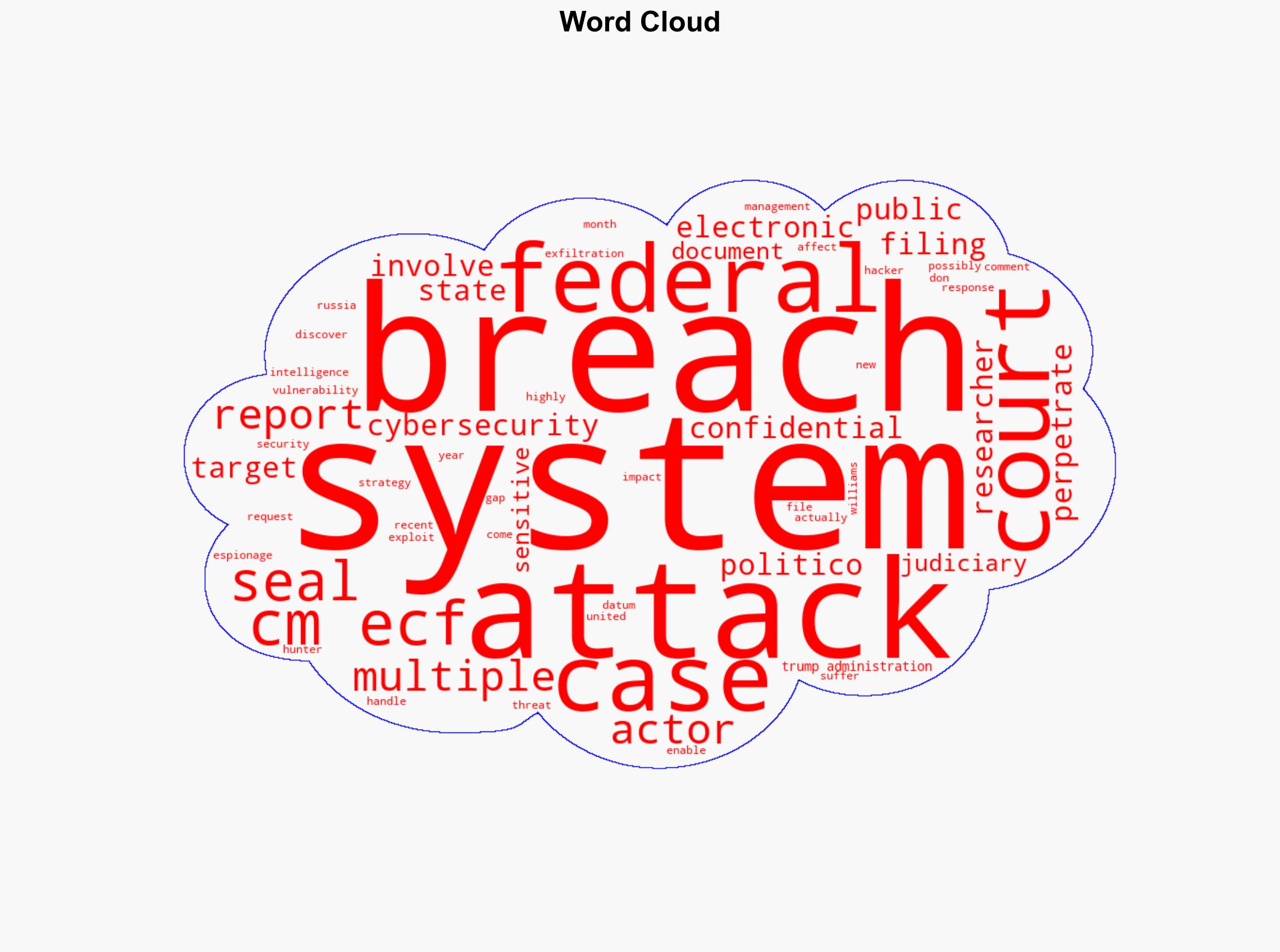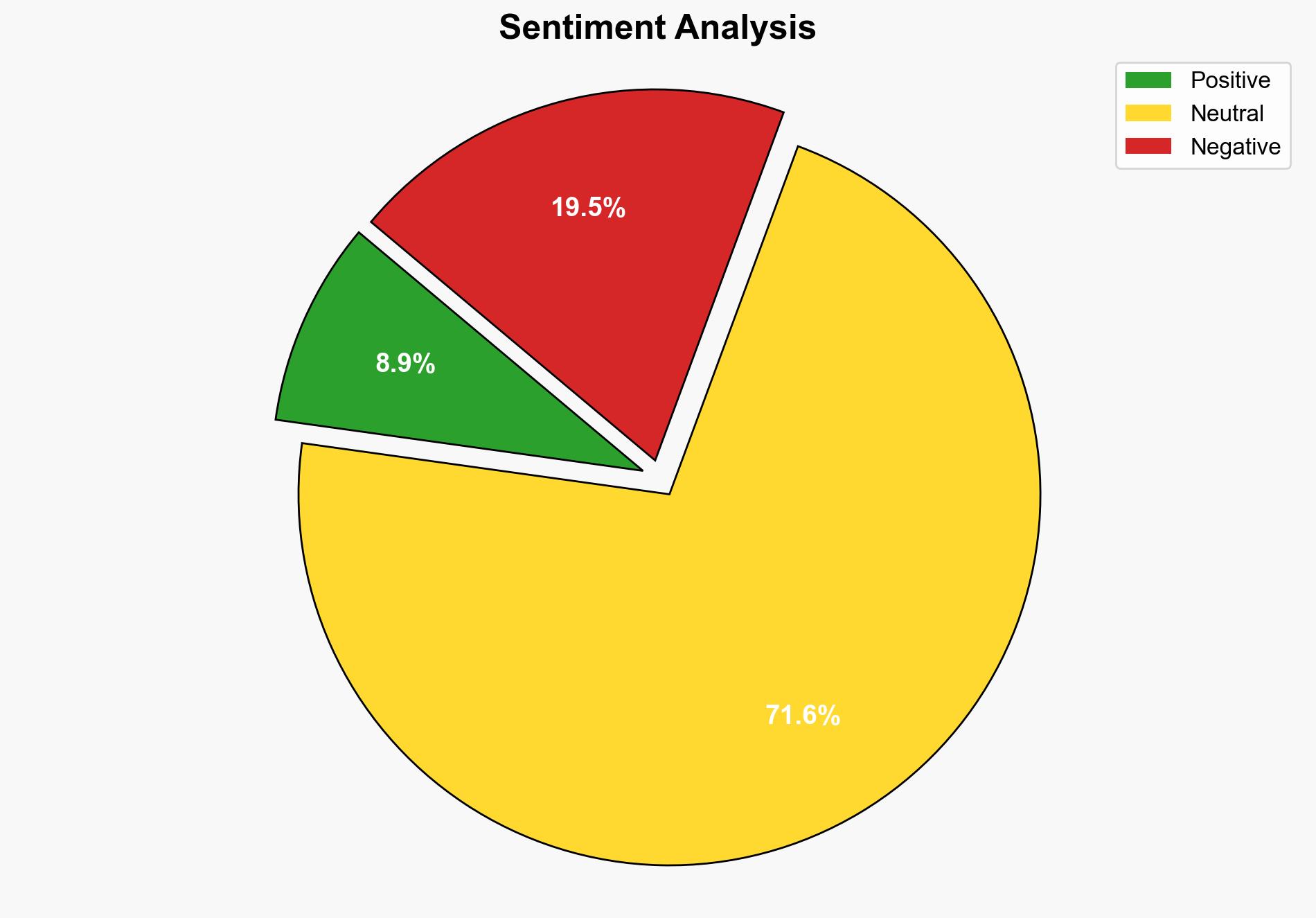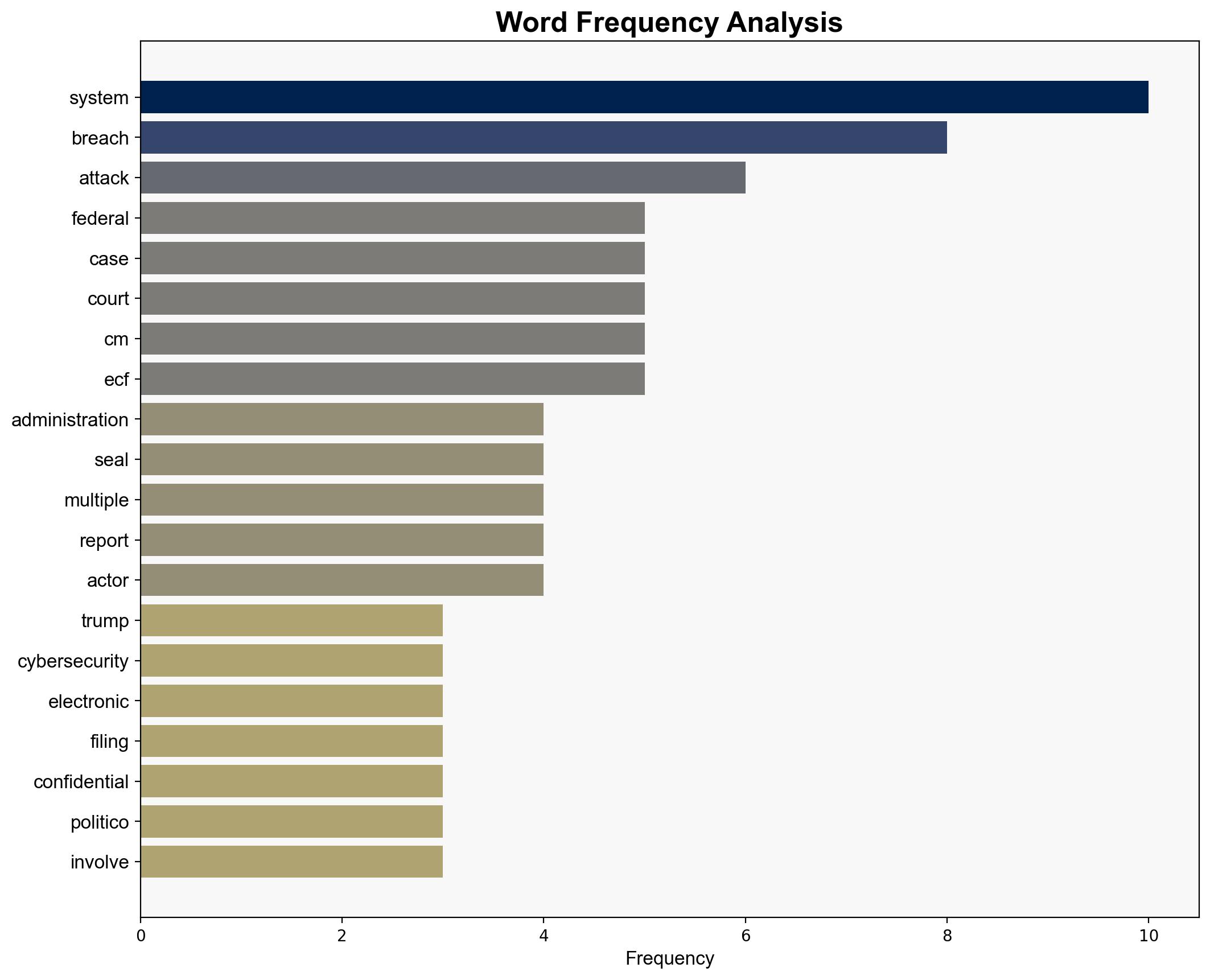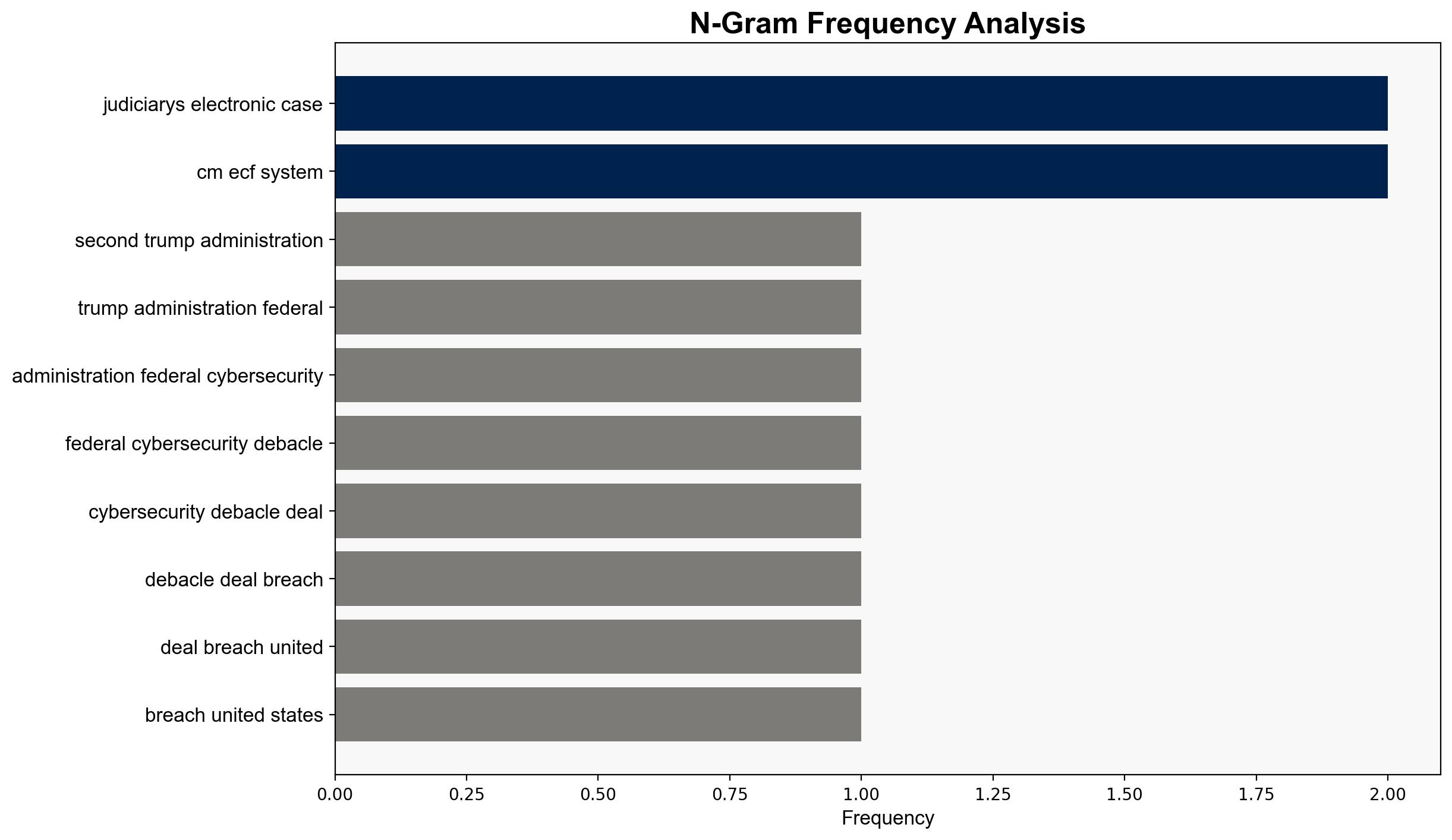The First Federal Cybersecurity Disaster of Trump 20 Has Arrived – Wired
Published on: 2025-08-14
Intelligence Report: The First Federal Cybersecurity Disaster of Trump 20 Has Arrived – Wired
1. BLUF (Bottom Line Up Front)
The breach of the United States federal judiciary’s electronic case filing system represents a significant cybersecurity threat with potential implications for national security and judicial integrity. The most supported hypothesis is that the breach was a coordinated cyberespionage operation involving multiple state actors, possibly including Russia, exploiting long-standing vulnerabilities. Confidence in this assessment is moderate due to the lack of definitive attribution and the complex nature of the cyber threat landscape. Recommended actions include immediate system hardening, enhanced monitoring, and international cooperation to identify and mitigate the threat actors.
2. Competing Hypotheses
1. **Hypothesis A**: The breach was orchestrated by Russian state actors as part of a broader cyberespionage campaign targeting U.S. federal systems.
2. **Hypothesis B**: The breach involved multiple actors, including state-sponsored groups from various countries and organized crime syndicates, exploiting the system’s vulnerabilities for espionage and potential financial gain.
Using the Analysis of Competing Hypotheses (ACH) 2.0, Hypothesis B is better supported due to the complexity and scale of the breach, which suggests a multi-faceted operation rather than a single-actor attack. The involvement of various actors is consistent with patterns of cyberespionage where multiple groups exploit the same vulnerabilities.
3. Key Assumptions and Red Flags
– **Assumptions**: It is assumed that the breach’s primary motive was espionage rather than immediate financial gain. The assumption that vulnerabilities were known but unaddressed is critical.
– **Red Flags**: The lack of clarity on the exact data affected and the time taken to detect the intrusion are significant concerns. The possibility of insider threats or complicity cannot be ruled out.
– **Blind Spots**: The potential for other undetected breaches in related systems remains a blind spot.
4. Implications and Strategic Risks
The breach could undermine trust in the U.S. judicial system, potentially exposing sensitive information that compromises ongoing investigations and the safety of informants. It poses a risk of cascading cyber threats to interconnected systems, increasing the likelihood of further attacks. Geopolitically, it could strain U.S. relations with countries implicated in the attack, complicating diplomatic efforts.
5. Recommendations and Outlook
- **Immediate Actions**: Implement system hardening measures, including patching known vulnerabilities and enhancing access controls.
- **Monitoring and Detection**: Establish centralized logging and monitoring to detect future breaches early.
- **International Cooperation**: Engage with international partners to trace and attribute the attack, leveraging shared intelligence.
- **Scenario Projections**:
- **Best Case**: Rapid identification and neutralization of threat actors with minimal data exposure.
- **Worst Case**: Prolonged exposure leading to significant data leaks and geopolitical tensions.
- **Most Likely**: Continued probing by multiple actors, necessitating ongoing vigilance and adaptation.
6. Key Individuals and Entities
– Jake Williams
– John Hultquist
– Tim Peck
7. Thematic Tags
national security threats, cybersecurity, counter-terrorism, regional focus




